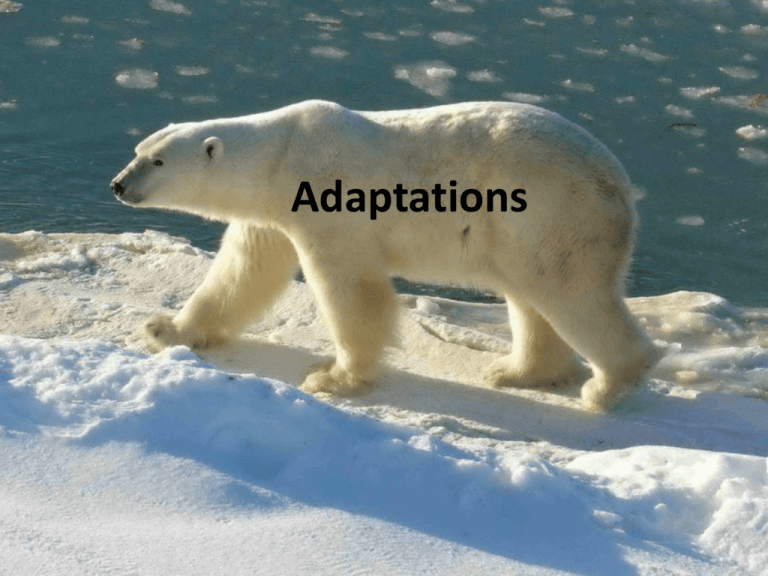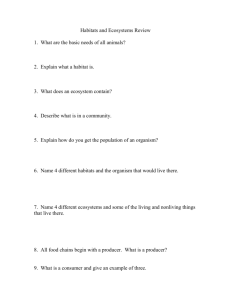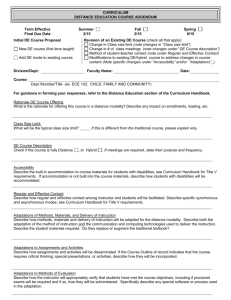Adaptations
advertisement

Adaptations What is an adaptation? • An adaptation is any structure, process, or behavior that helps an organism survive in its environment. • In an ever changing environment, adaptations determine which individuals are more likely to survive and reproduce. Why are adaptations Important? • They help organisms to get food! They help organisms eat. – Beak shape in birds depending on what they eat – Giraffes have a long neck to reach treetops – Some trees have broad, thin leaves to help absorb light energy Why are adaptations important? • To help organisms escape from predators – Protective skin-porcupines have quills, turtles have shells – Bad smell-skunks – Thorns-roses – Camouflage-tsome frogs, moths, etc. have colors that blend in with their surroundings • Some predators use camouflage too! It helps them blend in so they can catch prey! Why are adaptations Important? • It helps organisms to attract mates – Big, elaborate feathers, like peacocks – Elaborate antlers or horns like Elk – Plants use color and smell to help attract pollinators Why are adaptations Important? • Help organisms deal with weather changes – Some animals in Ohio hibernate in the winter – Birds Migrate – Some trees lose their leaves in the winter 3 Types of Adaptations • Anatomical or Physical • Behavioral • Physiological or process Physical Adaptations • Adaptations that are related to parts of the body. • Physical Features – Turtle shells – Thorns on Flowers Behavioral Adaptations • Things organisms (plants and animals) DO to survive or reproduce – Mating dances done by some animals Physiological Adaptations • An organisms automatic response to a specific change in its habitat or environment in order to maintain homeostasis (balance) – Snakes produce venom – Octopus sprays ink when threatened Common Adaptations • Camouflage: – An adaptation that allows an organism to blend in with its surrounding Common Adaptations • Mimicry – An adaptation that happens when 1 organism looks like another species. • Sometimes a harmless species looks like a dangerous one • Sometimes 2 dangerous species look alike • Predators can’t tell them apart, so they don’t go after either one!






